The beauty of small-ship cruising is that you never quite know what is going to happen next. In dealing with 100-odd passengers, the Orion crew, by expectation and necessity, must operate as a well-oiled machine.
Captain Frank Allica and Chief Officer Matt Jensen-Young were responsible for navigating Orion to safe anchorage on the inaugural 11-night West Papua and Maluku Voyage of Discovery. The captain and chief officer had worked together in 1988 when Allica was the first Australian captain of the bicentennial sail training ship Young Endeavour. Twenty-three years later they were working together again, this time sans sail.
The Filipino crew maintain Orion and tend to passengers’ needs. They also unload the Zodiacs and crew the landing craft. But whether captain or crew, all sailors must deal with the uncertainty of the sea. So it was with the landing at “uninhabited” Mapia Atoll. And that’s the enjoyment of expedition cruising. It was a rag-tag bunch of semi-senior sailors that set foot ashore.
Mapia Atoll is a coral dot with a veneer of jungle just north of the Equator in the Raja Ampat (Four Kings) Archipelago, a 3.6 million-hectare haven of biodiversity including 1500 coral islands, cays and shoals on the tip of Indonesia’s West Papua Province, north-west of Australia.
What’s there? A handful of fishermen and their families, what passes for an Indonesian naval base manned by a few sailors, marines and their families, a rusty-roofed, former Dutch colonial homestead, some basic government housing, chickens, dogs, a little post office, a street light… but no street.
A World War II cairn honours the Japanese soldiers who died there during the Battle of Morotai in November, 1945. At our landing, the only thing that might have been considered worth fighting over was a rusty wheelbarrow full of dried fish that had been placed on the beach in the hope of a sale.
After exploring the island with naturalist Michael Moore, the tide went out and the Zodiacs couldn’t make it back to shore for the pick-up. There was only one alternative, the landing party would have to walk back to the ship.
Life-jacketed, we trudged through 20cm-deep water across the sandy top of the reef, our destination, the Zodiacs waiting at the reef’s edge to ferry us to Orion in the distance. Our retreating party was assisted by the crew, watched by laughing children and aided by a few helpful Indonesian marines (they don’t get a lot of visitors to Mapia Atoll). The interesting thing about our escape was that during the epic journey and later, on the ship, there was not a word of complaint. It was enjoyed. Because of its size, Orion passengers also become familiar with the daily operation of the ship.
Six days’ prior, departing Rabaul on the first leg of the cruise, the Orion skirted the north-eastern coast of Papua New Guinea to arrive at Wewak, the capital of East Sepik Province. As Orion made way in the harbour in the early morning light, on the bridge, Captain Allica and Chief Officer Jensen-Young were scanning the harbour with binoculars, looking for an expected pilot. None came, so the Orion moored at the wharf.
A leafy party of tribal dancers turned on a vibrant welcome before a day of touring which included a visit to Cape Wom, where the Japanese Army surrendered in 1945. On the flanks of Mission Hill, Japanese anti-aircraft guns lie rusting in the jungle, their long-silenced barrels pointing towards the coast.
Moored offshore was a flotilla of Chinese and Japanese fishing vessels, poised to take advantage of fishing rights negotiated with the PNG Government. The ships represent the vanguard of a commercial invasion in which New Guinean subsistence fishermen, and the nation as a whole, may ultimately be the losers.
Sailing north-west, the next day Orion dropped anchor at Jayapura, in Indonesia’s Papua Province, a very Indonesian city, the growth of which is driven by mining wealth. We finally met indigenous New Guineans at Assei Village after a picturesque boat ride across Sentani Lake.
The boats skimmed past coastal shanty towns built on stilts. As we approached, naked, waving children jumped in the water.
At Assei we were greeted by wide, white smiles, more excited children, more dancing and no-pressure bartering for beautifully rendered bark paintings. There were afternoons of snorkelling above brilliant coral gardens in the Raja Ampat Archipelago.
One small island had a tide-line of thongs, plastic bottles and other ocean-going junk, an indication of less-than-pristine human impact.
Orion cruised through the McClure Gulf and on to an unforgettable welcome at the village of Kokas in Fak Fak Province.
The villagers turned out with song and dance. As we walked, elderly women surged forward, stretching out their hands to touch the curly, blonde locks of Orion’s only child passenger, an 18-month-old boy carried by his mother. In Kokas, Muslims and Christians live side-by-side, the polished dome of the mosque and the spire of the Catholic Church overlooking the houses huddled around the small bay.
In the Kei Islands, on the edge of the Banda Sea, at the village of Dullah, we were honoured with elegant dancing by a troupe of young women, their expressive hand gestures and delicate steps reminiscent of Bali. Centuries ago, members of the Balinese Royal Family and some of its army are said to have arrived at Ohoi-Ewur on Nuhuroa Island and were taken in by the local villagers.
In signing off the log book on this expedition, it’s appropriate to paraphrase one of World War II’s greatest military chiefs, US General Douglas MacArthur, Supreme Allied Commander of the Southwest Pacific:
“We came out of Mapia Atoll. And we shall return.”
But one of the general’s lesser known quotes is probably more apt:
“Age wrinkles the body. Quitting wrinkles the soul.”
Photo Credits
All Photos © Vincent Ross – All Rights Reserved


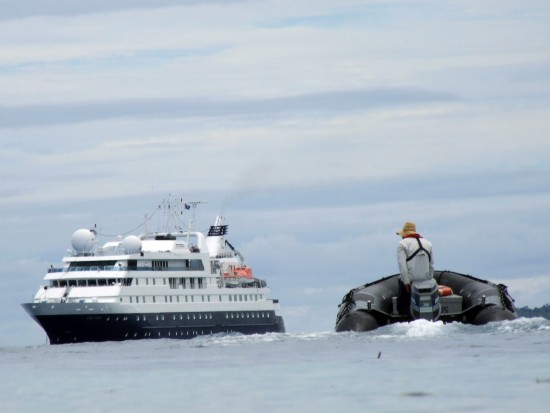
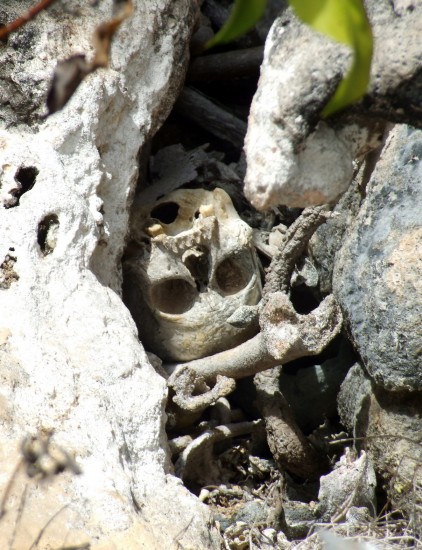
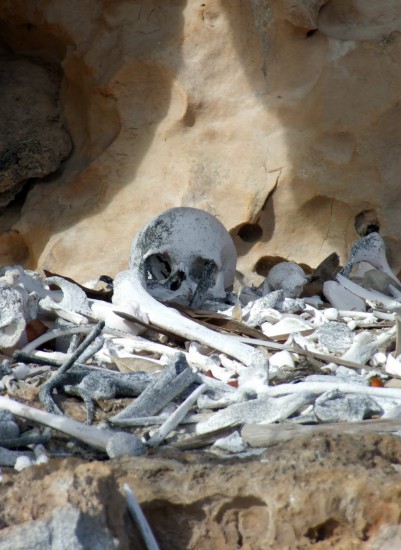
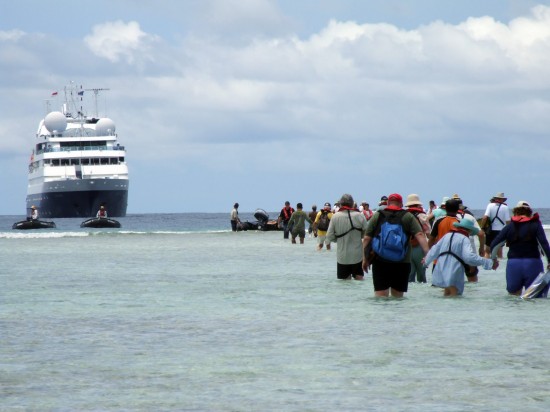
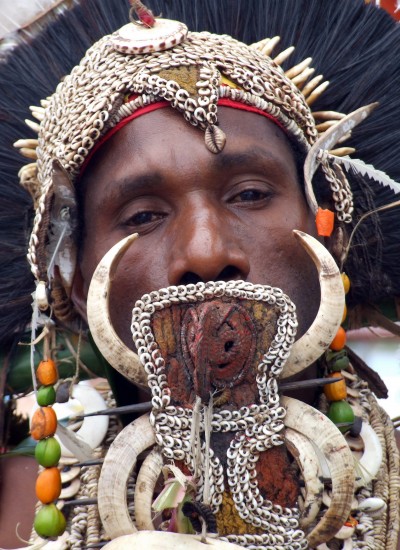

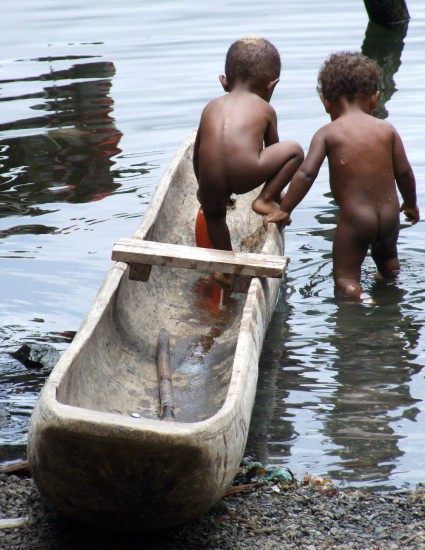
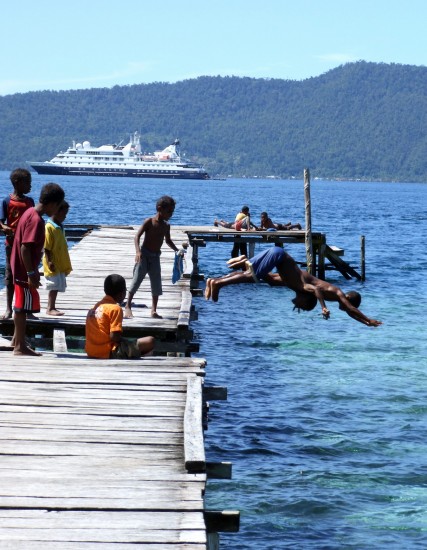
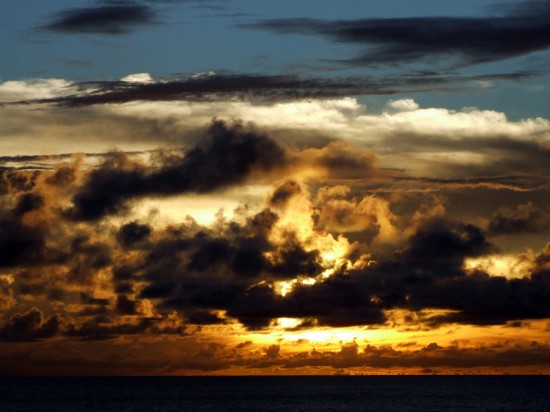
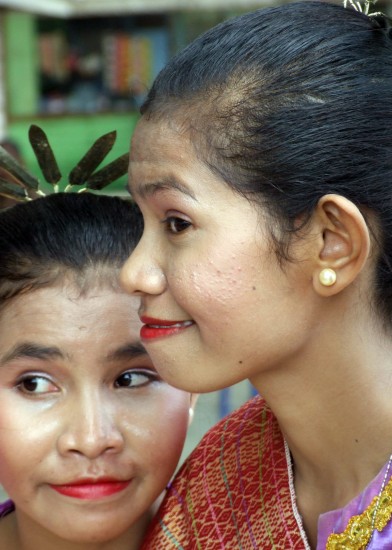
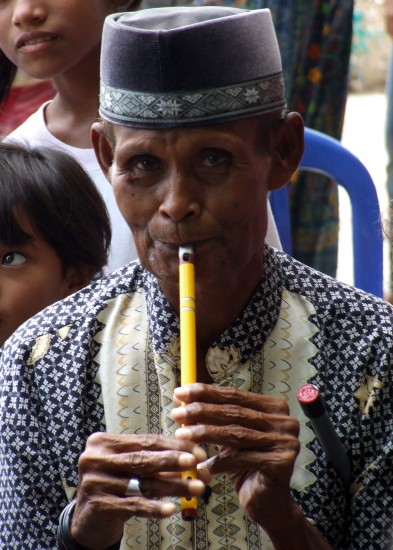

Nice story Vincent! Good to read your words. I love Mapia – such a wild little place that hides so much unknown history!
Justin
Hi Justin,
Thanks for that.
Enjoyed the cruise very much and quite sincere about compliments to crew.
How are things going?
Is Orion II holding her own in the current climate?
Cheers,
Vince